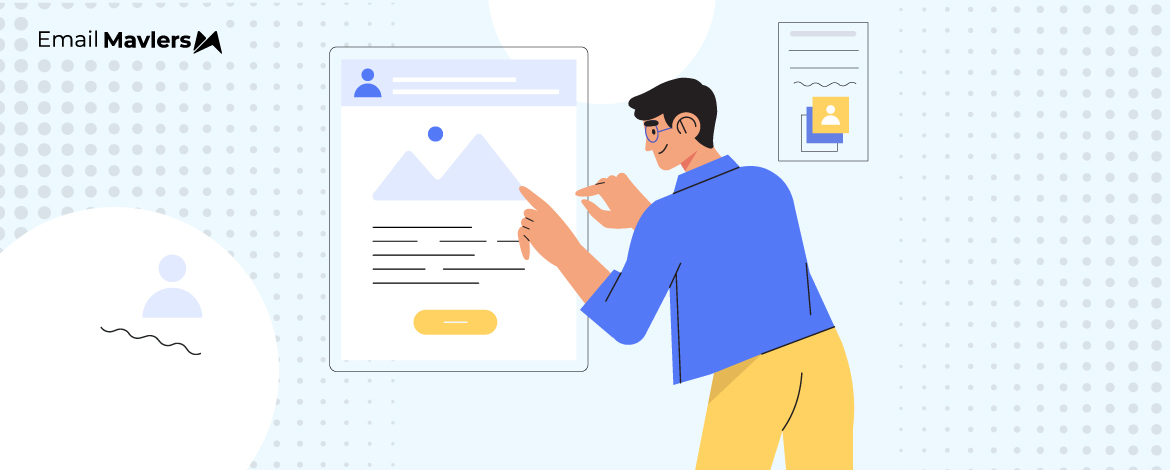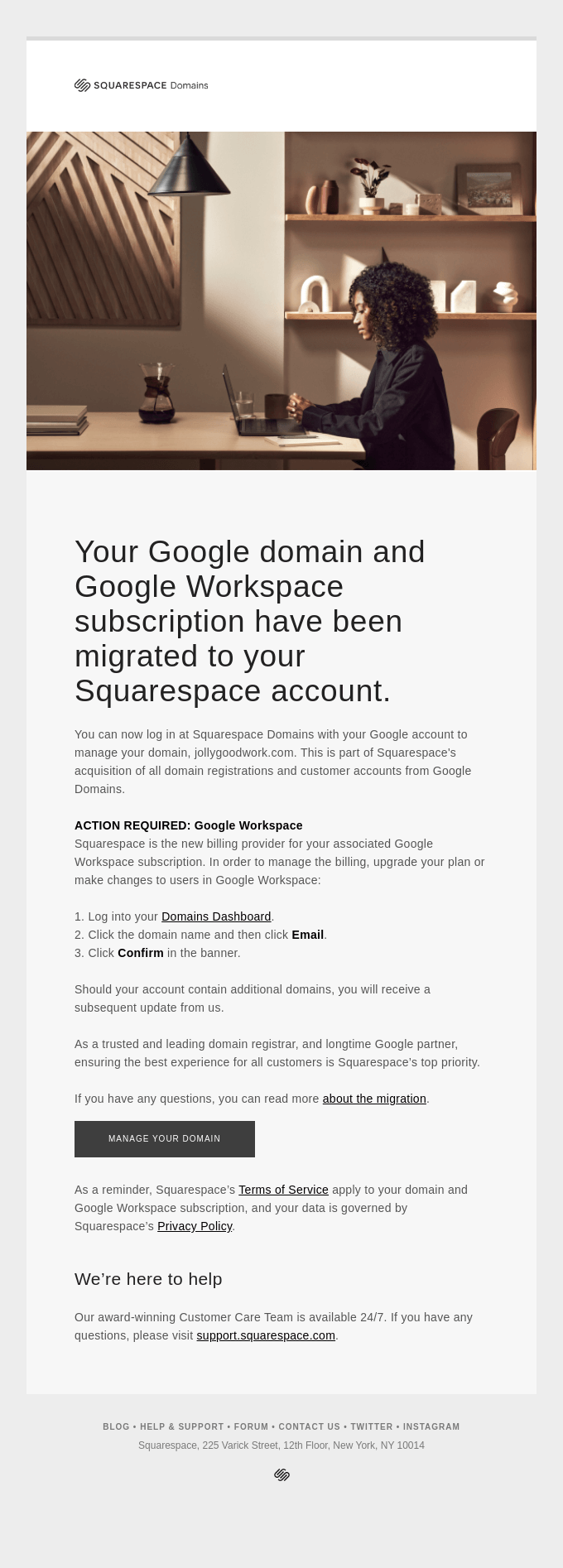The concept of “invisible SaaS,” which refers to the trend where SaaS tools increasingly require minimal to no interaction on the part of users, has thrown a peculiar problem of marketing into sharp relief: If marketing is essentially about being visible, while SaaS is “invisible,” how do you market SaaS products?
Harder still, how do you begin to approach personalization?
If you’re asking the same question, then this guide is for you. We at Email Mavlers, with over 12 years of experience in the field, have worked with a number of SaaS companies. Not only can you market SaaS products, but do it well enough to put yourself on the map.
While you can’t touch or feel SaaS, through proprietary guides, images, testimonials, and granular interaction with users, you can make your SaaS products come alive via email marketing. In this blog post, our design team will lead you through seven personalized email template design examples in the SaaS space. Let’s get started!
1. SaaS Welcome Email
Following a new brand-new sign-up, a welcome email, or a series of welcome emails, helps you set the tone for the rest of your communications with the subscriber. An onboarding sequence, one that is easy to follow, is especially critical for SaaS brands. Take a look at Lummi’s personalized email template design here.

Lummi’s welcome email is personalized, and it spotlights some of the cool features available on the platform. With a mix of text and visually rich images, Lummi sets the stage for a long-lasting relationship with the new subscriber. Instead of overwhelming a “freshman” with loads of product information, Lummi lets the user take a peek first before urging them via a single CTA button to explore the platform on their own.
2. SaaS Behavioral Email
Personalization on its own is just a fine theory; but you can’t stop at mere intellectual assent.
Because, as with everything else, personalization also has its own spectrum: You can be great, average, or bad at it. According to McKinsey & Company, companies that “excel” at personalization generate 40% more revenue than those that are just good at it. In order to excel, you’ll need to leverage first-party behavioral data, and send real-time personalized emails to your customers.
Let’s look at Loom’s personalized email template design below.
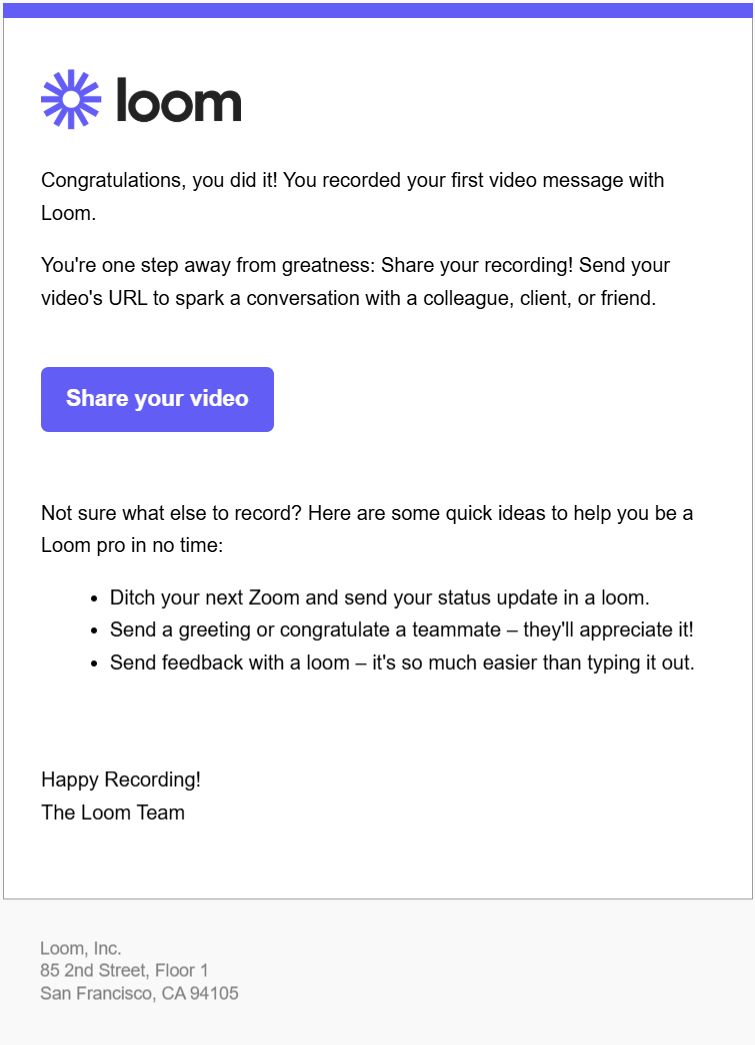
Loom’s personalized email comes like a pat on the back. That’s all a first-time user needs in the initial stages. Now, this assumes great significance in the SaaS space. It is not easy to use SaaS products. Getting acquainted with complex features, workflows, and interfaces often necessitates tremendous handholding. In light of that, such short, celebratory messages can be impactful. Thus, signaling that you’re there for the rookie, and empathetic to their situation goes a long way.
Speaking of handholding, LinkedIn does it well with new users. Here’s a quick example of the same.
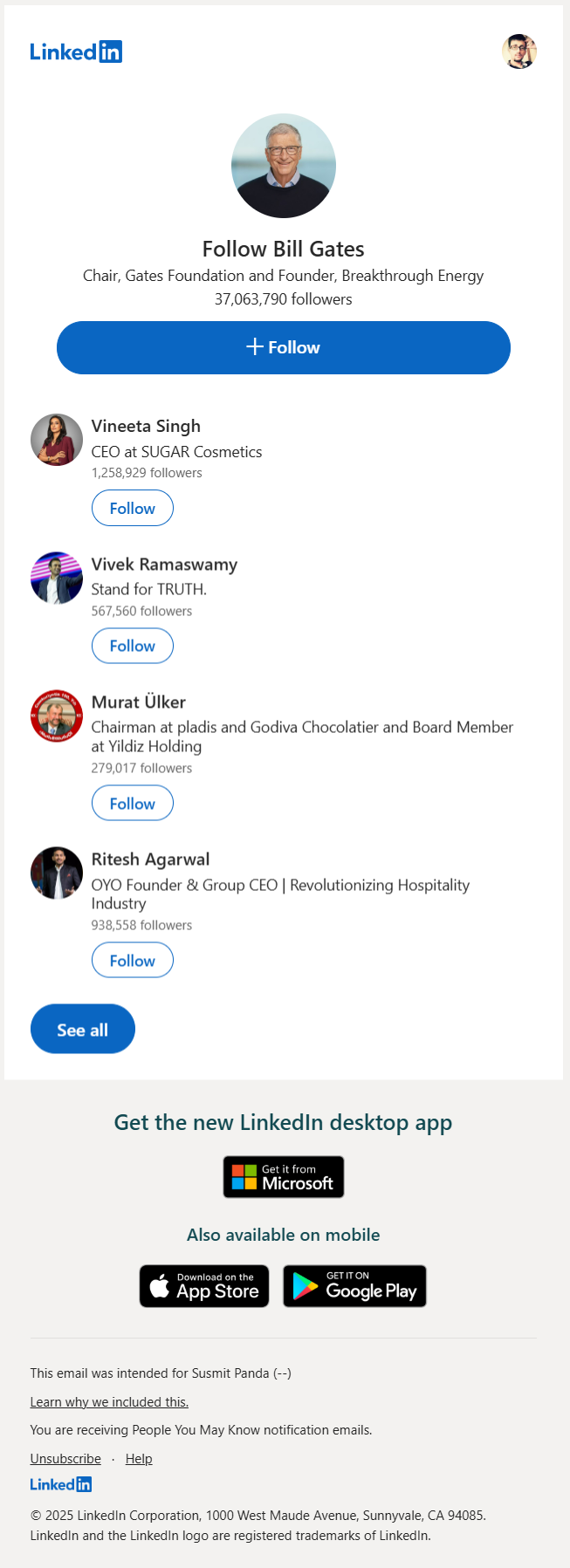
3. SaaS Geo-localized Email
Personalization based on geography is yet another arrow in the SaaS quiver. As Andrew Humphrey, Senior Media Strategy Director at Tricom B2B, asserts, “When should a B2B campaign consider geotargeting? The simple answer is 100% of the time.”
The singular benefit of geo-targeting is increased relevance. This also leads to reduction in ad spend.
Humphrey goes on to point out, “Sometimes a location is all you need. For example, if you’re promoting an event in Cincinnati, it makes sense to target people in Southwest Ohio, Northern Kentucky and Southeast Indiana. Think about key areas where attendees are bound to be: airports, bus terminals, hotel lounges, highways, etc.” Email is extraordinarily poised to amplify the effect of geo-personalization. Take a look at Oracle’s email below.

The above email is targeted at Oracle’s Indian customer base. It’s clear from the mentioned time-slot and featured speakers.
Oracle’s approach to design in this email seems to be modular. As you can see, the hero space is generic. Oracle seems to have swapped out a different location-based module and slid in the one in view, just for the Indian segment. The template is alternately divided into single- and double-column grids. In an email that is necessarily full of info, Oracle leverages white space to a T.
4. SaaS Dynamic Personalization
Dynamic personalization is the process where a piece of content changes automatically based on real-time data insights as generated by user behavior. This is advanced personalization. If you want to “excel” at personalization, this is where it’s at.
Litmus rightly calls dynamic content the shape-shifter of emails, “Dynamic content helps your email transform like a chameleon based on who’s opening it and when.” Check out Lulu’s dynamic email design below.
Note the content block highlighted in red. That’s where dynamic personalization is in force. With every step completed, the portion gets updated in real-time. This saves you the time and effort to create new emails per step. You may have come across such emails in the e-commerce sector where the customer is usually prompted to save the email so they can track the status of their product. But here’s a cool use case in the SaaS space.
The CTA button is also dynamically updated.
Because the subscriber is still at the first stage, Lulu dedicates the rest of the email to helpful resources on getting started.
Lulu’s color choice is also consistent with their brand palette.
5. SaaS Account Update Email
Sending account update emails can be a great way to personalize your communication with your customer. For example, consider this personalized email template from Squarespace.
To return to the aspect of handholding SaaS users, here is a good illustration of the same. Arranged in bullets, the next steps are clearly highlighted, the relevant terms bolded, and help resources hyperlinked. Critically, because the success of any SaaS product depends so much on the user, it is necessary to strike a balance between what you as a provider require your customer to do, and how much the latter can manage to do at a time. Squarespace gets this, and we like how they’ve included only one CTA button in the end, having delineated the process first in simple terms.
It is equally important to stress how you write such emails counts a lot. Squarespace’s tone is empathetic and helpful. In fact, this characteristically non-overbearing nature of the message is what sets it apart.
6. SaaS Personalized Gaming Email
Email is first and foremost a relationship-building channel. Since it is uniquely positioned to leverage personalization, it has been adopted by the gaming industry. Through the course of a game, you get many opportunities to personalize your messages. This is particularly well-recognized by Duolingo.
Check out this personalized email template design example.
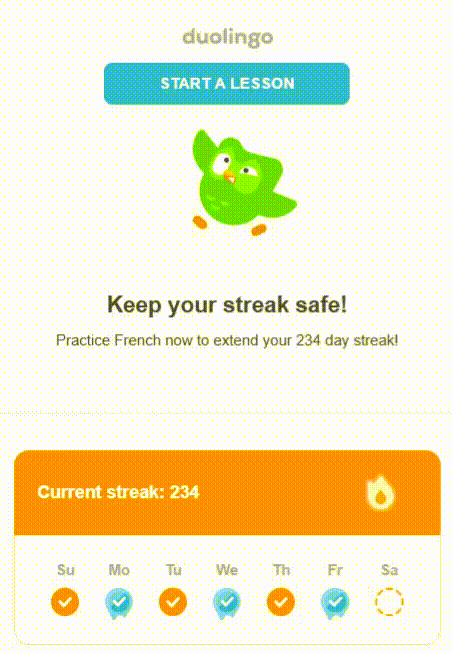
With every milestone, Duolingo sends timely emails to the effect that players are constantly encouraged to move on. In the context of language learning especially, what Duolingo does is not only email-sensible, but psychologically impactful. Learning a second language requires a continuous supply of motivation; Duolingo’s team goes the extra mile to squeeze out email in order to supply a daily dose of motivation to its players.
The above email, employing animation to a great effect, kicks off with a CTA button, signaling the urgency of the reminder. Clicking on the button redirects the user straight to the app. It is optimized for mobile, and very tastefully designed.
The player’s personal streak is featured at the bottom, giving an overview of the latest week of play.
Minimal, clean, and short, this email is right on the money.
7. SaaS VfM Personalized Email
Blue Ocean Corporation describes value for money (VfM) thus: “Value for money (VfM) is not about achieving the lowest price. It is about achieving the optimum combination of whole life costs and quality.” In the lens of this, take a look at the following email personalization template from Grammarly.
Customers want to be persuaded of the value they’re getting from the dollars they spend. This might not always be obvious. Therefore, presented with such a detailed record of how a user has been leveraging the platform, the recipient has proof of their engagement, which reinforces their sense of value. Grammarly makes extensive use of AI and machine learning to highlight the strong and weak points of the user. The granularity is quite breathtaking. This is personalization at its educative best. Here’s what stood out to us in particular:
- Clear presentation of bar graphs, text, and content blocks
- Aesthetically consistent banner images
- Brilliant use of negative space throughout
- Economy of relevant icons and emojis
- Fine balance between personal and promotional
Wrapping Up!
SaaS may be invisible, but going by our examples, with the right mix of strategy and design, you can make SaaS palpable.
If you need help with marketing your SaaS enterprise, feel free to get in touch with our email marketing team.



